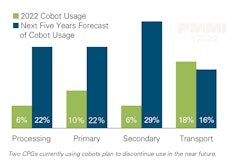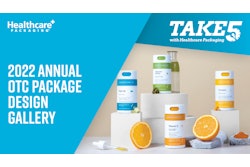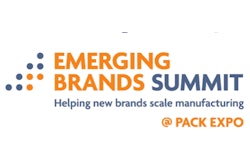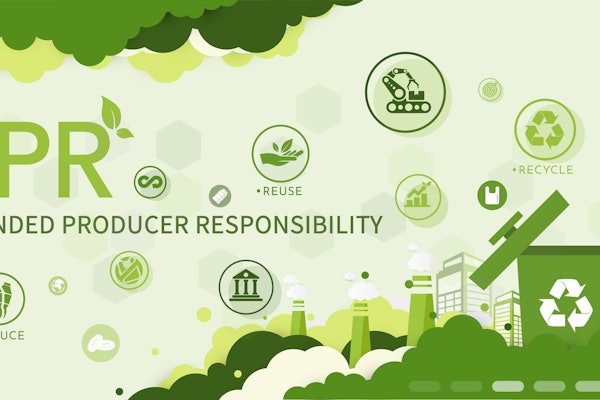The pharmaceutical white paper from PMMI Business Intelligence explores the trends shaping the future of pharmaceutical processing and packaging. This episode of UnPACKed with PMMI takes a deep dive into the white paper with Donna Ritson, President of DDR Communications. Ritson discusses how the COVID-19 pandemic disrupted pharmaceutical production and how that disruption affected the industry. She also highlights that, more than ever before, pharma companies are open to input and cooperation from OEMs to find ways to prevent this deep disruption in the future.
To subscribe, rate, review and find more unPACKED podcast episodes, visit pmmi.org/podcast or find us on Apple podcasts, Spotify or iHeart Radio.
 | Read the full transcript below |
Sean Riley:
And it is our pleasure to welcome back one of our most frequent guests, Donna Ritson.
Donna Ritson:
Thanks, Sean. I always enjoy being with you.
Sean Riley:
Well, you are our business intelligence guru, so let's delve into the pharmaceutical industry. And before we even get involved with the trends and the white paper that was done and the report, let's just take a step back for a second. And can you, you know data better than anyone. Can you give us a brief overview of kind of what the financial landscape is of the pharmaceutical machinery market right now?
Donna Ritson:
Absolutely. Sean and that's always a really good place to start. So in this report we use the 2021 PMMI State of the Industry, and that reports that the pharmaceutical machinery sales have really grown steadily over the last decade, reaching about, I hate to throw out a lot of numbers, but I'll do some statistics here. It's reaching about 800 million in 2020. Now, keep in mind that the pharmaceutical segment is less than 10% of the overall machinery market that the State of the Industry report shows. But the good news for suppliers in this is that the pharmaceutical machinery sales are predicted to grow at a CAGR of 7.6% through 2026. And that's actually outpacing the rate of the US packaging machinery overall, which is forecast to grow at 5.2%. And then also another interesting note that comes out of the State of the Industry report is that the pharmaceutical segment dominated two important machine categories in 2020, and that's filling and closing machines. And certainly not surprising that it was blister skin and vacuum packaging machinery.
Sean Riley:
Like you said, that makes sense that it would be those machine types. And this all sounds like obviously great news for pharmaceutical equipment makers. It seems like pharmaceutical machinery with all the regulations and stuff, it doesn't get updated or have huge improvements as much as food and beverage, which we deal with so much on here. So I guess what about pharmaceutical products themselves? What impact are the actual drugs having on the growth in pharmaceutical equipment?
Donna Ritson:
This is a really good point to hone in on Sean. The pharmaceutical industry really is experiencing some fundamental changes in the drug formats themselves, specifically injectable drugs. They're becoming much more common than they were even just a few years ago. So if the predictions hold true for both revenue and growth, we're going to see by the end of this year that injectable drug market will have grown 100% since 2016, which when's the last time we've heard of such major growth going on.
Sean Riley:
Yeah. Right. 100%.
Donna Ritson:
And we can even find further support of this growth in injectables from the FDA list of approved drugs. So we took a look at this list and two out of five new drugs approved in recent years have actually been in injectable formats. And let's keep in mind, this doesn't mean that traditional formats like tablets and capsules are disappearing. I mean, far from it. Those are still the dominant drug formats in our industry. But the significant growth in injectable drug options is really shaking up some important pharmaceutical manufacturing operations.
Sean Riley:
Yeah. That's interesting to hear because yeah, obviously, tablets and capsules are how we've ingested drugs for years. But to hear this about injectables is news to me. So I mean, what would that mean for the drug manufacturers and the pharmaceutical OEMs?
Donna Ritson:
Well, the expansion of injectable drugs really now allows the pharmaceutical manufacturer to bring their variety of drugs or their variety of medications by offering different drug formats. We spoke to one of the engineers at a large generic pharmaceutical company, and he shared with us that they're moving away from ampoules and vials to more pre-filled syringes. So we're hearing this significantly in the interviews that we did for this report. And if we want to take this one step further, the diversity with injectables itself is also expansive within that market. So you could have auto injectors all the way to pre-filled syringes. And this means that the manufacturers are having to accommodate more machine changeovers with this wider variety of injectables that they have to choose from.
Donna Ritson:
So for pharmaceutical OEMs and suppliers, this really means machine flexibility has got to be top of the list for design. It comes down to being able to handle more formats, being able to do that with more efficient changeovers. And as we learned in the report in the interviews that we undertook three out of five of the leading pharmaceutical companies are planning to increase their capital budgets or at least spend at the same level. And that's really to help them advance automation. That includes robots and cobots. And this certainly means opportunity in the industry.
Sean Riley:
Very interesting. Yeah. I was trying to wrap my head around the injectable part and you explained it pretty well because if you're trying to eliminate having to have vials, you just have the medication already in there. So I got a handle on that. So that was a great explanation on your end. Beyond acquiring additional machinery, are there other solutions that pharmaceutical manufacturers are turning to when they're looking to bolster their production capabilities?
Donna Ritson:
Absolutely, they are. And one key strategy that keeps coming up in our interviews is outsourcing. So drug makers, they're increasingly turning to contract partners to help them really round out their production capabilities and manage any type of overflows that they might have. And we know there are several reasons and we've listed them in the report. Why contract users are so important. And one of those could be that the pharmaceutical manufacturer may lack certain capabilities in house. So they find it easier to turn to a contract packager to fill that void. For instance like packaging, a unique type of auto injector might not be the type of equipment that the pharmaceutical manufacturer has in house.
Donna Ritson:
And a second topic is digitization. This isn't a new topic. This is something that's occurring across all industries, we know that, pharmaceutical manufacturers included. They're just all seeking to gather more data from the sources across their operations. So the goal here is to leverage this so-called big data into meaningful improvements, like synchronizing essential changeovers that have needed maintenance, so that they're minimizing downtime. In this goal of even greater digitization, it also aligns very neatly with the rapid approaching requirements to the Drug Supply Security Act.
Sean Riley:
Okay. So you just mentioned that the Drug Supply Chain Security Act and that it's something that I feel like it's been spoken about and kind of been on pharmaceutical manufacturers radar and in all the B2B publications about pharmaceuticals for years now. And with the final kind of compliance deadline approaching in 2023, how's the industry responding?
Donna Ritson:
As you pointed out, this is not a new topic for the industry. Manufacturers are well aware of this DSCSA compliance deadline coming up. And the majority of the manufacturers that we have spoken with, they've certainly undertaken all the steps they need to meet approaching compliance deadlines, but they remained about one in four that we interviewed that still have more work to do. So this really lends itself to the OEMs and suppliers. There are opportunities out there to continue to work with these companies, to help them meet their compliance deadlines. And that could be in a variety of situations. They might be looking for new machines. They might be integrating existing machines to get that digital data and that digital reporting that they need or implementing management software that's going to bring all of that together into one cohesive location. So there really are numerous reasons why these manufacturers are not yet compliant. But the key takeaway here is that most of these companies that still have some compliance regulations that they need to meet, they still are looking for outside help to help them be compliant.
Sean Riley:
Interesting. Okay. So beyond that, is there another key message or overarching theme that readers, listeners to this podcast should kind of expect to get from this white paper?
Donna Ritson:
Absolutely. Sean, I can kind of summarize here and there's a lot of information in this report. As we know, white papers have a tendency to bring some really valuable insight from the perspective of the users. One of the most interesting findings that we discovered through our interviews and our research is that the stakeholders across the pharmaceutical industry are really more open now to cooperation. Let me elaborate on this just a little bit for our listeners. We all know that COVID-19 really pinched a lot of stakeholders at all levels in the industry and really across all industries with the widespread shortages and slowdowns. This created a lot of challenges and they're not really fully resolved yet. Certainly. So this is a universal pain that really has changed the perspective of many in the pharmaceutical industry. We know the stakeholders are protective of their data, their processes, and their operations.
Donna Ritson:
And that's certainly justified particularly in such a highly competitive market. But the stakeholders have concluded they need to find ways to prevent this deep disruption in the future. So many of the stakeholders that we spoke with have expressed interest in sharing information with an overall agreement to achieve greater cooperation and coordination going forward to help alleviate this problem if it ever occurs again. This isn't to say that drug makers are throwing open their doors and they're going to open everything to their competition. That's not what I'm saying, but it does signal a significant shift in working together to solve mutual problems.
Donna Ritson:
So if we bring this back to our listeners full cycle, there's an opportunity for OEMs and suppliers to step in and help advise these companies how to most effectively increase this industry cooperation. So let's just think for a minute sort of outside the box, maybe one of these forms that it takes is imagine something like a blockchain based repository of accessible information in the future where all of these stakeholders share in contributing and benefiting from something like that. But most important really here, the takeaway is that OEMs and suppliers, they have a real opportunity to help facilitate this coordination and this cooperation across the industry. And certainly in that process, developing strong and lasting relationships.
Sean Riley:
Very interesting. There's so much to learn obviously about the trends that are dominating the pharmaceutical industry and shaping the production and packaging needs of drug manufacturers. So I urge our listeners to get your hands on the full white paper, Pharmaceutical Manufacturing: Trends Shaping the Future on pmmi.org. That's going to give you just the basics to kind of get you headed in the right direction. And there is also going to be a webinar that Donna is going to be participating in. That will be up on pmmi.org, that you can go back and watch where you can put a face to the name and you can also hear Donna go a little bit deeper on some of the facts in there. But again, the best thing to do is to make sure that you download that white paper. Donna again, I can't take thank you enough for taking time out of your day to come on here and really bring us up to speed on the latest in business intelligence.
Donna Ritson:
It's always our pleasure, Sean.





















